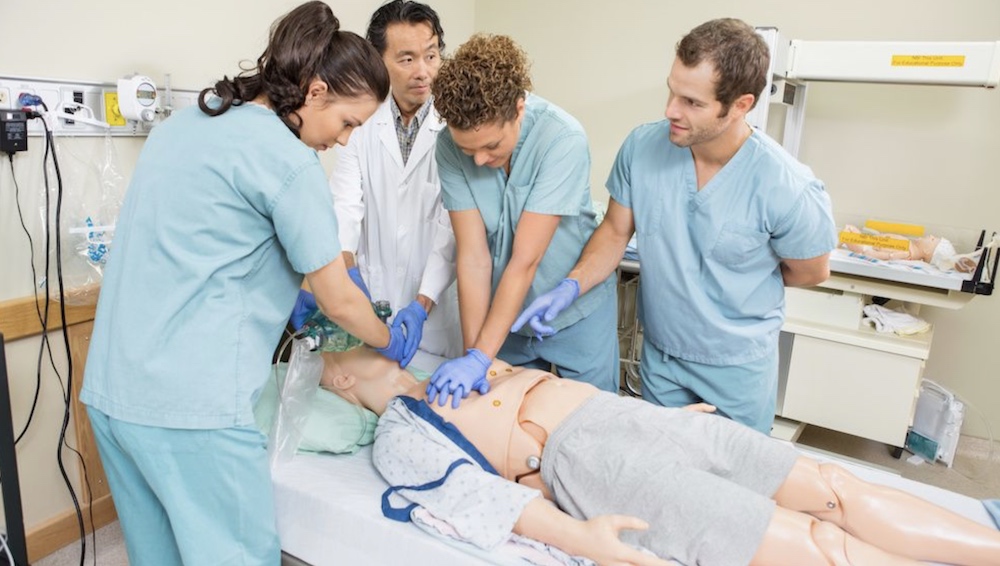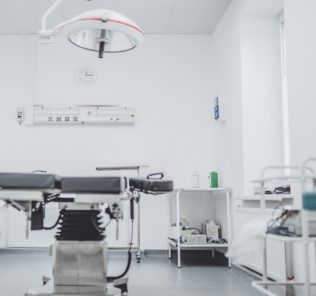Simulation Design Framework to Promote Professional Identity Formation
As part of HealthySimulation.com’s webinar series platform, A.J. Kleinheksel, PhD, MEd, CHSE-A, the director of research and evaluation for educational simulation at the Medical College of Georgia at Augusta University, shared an informative presentation of why simulationists should design healthcare simulation for professional identity formation (PIF). Referring to the personal growth over time in becoming a skilled medical professional, PIF can be conceptualized as the ability to meet certain criteria. Within their medical simulation webinar, Kleinheksel touched on the new PIF design framework that their institution has developed as a result of research into PIF in healthcare simulation, and how other simulationists might apply that framework to their own clinical simulation case design. The webinar provides Nursing CE contact hours as part of the new HealthySimulation.com LEARN platform.
Kleinheksel began by explaining that PIF is common in the literature across health professions, and is not specific to one profession. Rather, the process is usually gradual in nature where a professional is internalizing their self-concept as a member of a respective profession. For example, someone in medical education may progress into a physician, whereas someone in nursing education would progress towards becoming a nurse. The question then becomes, when does that person feel like a nurse? When do they start to embody the characteristics and the beliefs of the profession?
“As health professions educators, we’ve decided that [PIF] is important because it’s kind of an implicit social construct. It’s a contract really between what we are as health professional educators and the community where we hope our learners will serve,” Kleinheksel explained. “What that means is that, if we bring people into our profession, whatever that health profession might be, they’re going to embody the standards and the values and the characteristics of that profession.”
Sponsored Content:
To investigate the ideas of patient care ownership and professional identity formation in simulation, which is where Kleinheksel does most of their research, the team at the Medical College of Georgia at Augusta University started a research agenda in their simulations program. This was because they didn’t know if the PIF phenomena happened in simulation, solely in clinical rotations, or once a learner has graduated and is practicing.
“The first year we did a pilot study in 2017, and we had just under 200 medical students go through individual simulations. They were the only learner in the room and there was a standardized actor in the room playing the role of the nurse when they would go through an emergent situation,” Kleinheksel said. “It was a lot of work just to see what happens with 200 students, but it came off great.”
Then, to explore these themes, Kleinheksel’s team gave research participants a post-simulation survey and asked some open text prompts like, “Did this make you feel like a physician?” and “Did you experience feelings of patient care ownership?” The 76 of 192 learners who responded provided comments on which the researchers were able to perform content analysis to see what was happening in relationship to patient care ownership and PIF.
“There is professional identity formation happening in simulation,” Kleinheksel confirmed. “In 2018 we repeated the same basic fundamental design and introduced some new variables. We split the learners into pediatric cases and adult patient cases that were parallel in nature; both asthma exacerbation. We did post-debriefing focus groups where we probed a lot more deeply into what was happening and their experiences with PIF.”
Sponsored Content:
With a proof of concept, the researchers again moved a little bit further with their focus groups. After two years of focus groups, they identified a process of PIF, specifically relating to healthcare simulation. This process identified that ownership seems to be the catalyst for PIF, so feeling that sense of responsibility is what kicks off this process in learners. Kleinheksel believes there is a stage where they identify and accept the responsibility that they’ve been given as a member of the simulation.
“Then they have to reconceptualize who they are, where they are in their training, and if they are able to do certain things. They come to a place at the end where they have a better understanding of what the role they will soon embody really looks like and feels like, and they might start to reprioritize some of the things that they’re trying to learn and master in the process,” explained Kleinheksel.
Benefits of Professional Identity Formation
Knowing this information about PIF in simulation helped Kleinheksel and their team identify four key benefits of developing a professional identity earlier during the learning process. The first is that promoting PIF through simulation design can facilitate cognitive coaching.
“[After the reprioritization phase], learners kind of understand where the empty buckets are, and it’s a little bit easier to fill them. You can coach them through how to think as a member of the health profession once they’ve experienced that role and had those feelings and those experiences because it gives them some more mental structure,” said Kleinheksel.
Other benefits of promoting PIF is that this can help to reduce the burden of transition, affect patient care outcomes, and protect against burnout. Ultimately, PIF should be a part of the healthcare simulation equation and should be variable based on the level of the learner with regards to where they are within the curriculum.
“Getting [learners] used to that responsibility earlier on is, I think, what probably protects them against burnout later on,” Kleinheksel advised. “When you understand the responsibility you can ramp up to that level rather than feeling like you’re being thrown into the deep end.”
Moving forward, Kleinheksel is interested in working with others to study how PIF translates into other professions beyond medical education. They hope their team’s research inspires professionals to try to implement PIF simulation cases to see if the strategy makes a difference in learner confidence and performance.
“We’re really trying to help [learners] feel the standards and the characteristics and the values of the profession so that when they step into that role, it’s less unfamiliar because they’ll understand a little bit better what’s expected of them,” said Kleinheksel. “We’re all just trying to aim for the better patient outcomes and hopefully this is one small piece of what can contribute to that.”
Watch the PIF Webinar Here!
Lance Baily, BA, EMT-B, is the Founder / CEO of HealthySimulation.com, which he started in 2010 while serving as the Director of the Nevada System of Higher Education’s Clinical Simulation Center of Las Vegas. Lance also founded SimGHOSTS.org, the world’s only non-profit organization dedicated to supporting professionals operating healthcare simulation technologies. His co-edited Book: “Comprehensive Healthcare Simulation: Operations, Technology, and Innovative Practice” is cited as a key source for professional certification in the industry. Lance’s background also includes serving as a Simulation Technology Specialist for the LA Community College District, EMS fire fighting, Hollywood movie production, rescue diving, and global travel. He and his wife live with their two brilliant daughters and one crazy dachshund in Las Vegas, Nevada.
Sponsored Content:





















